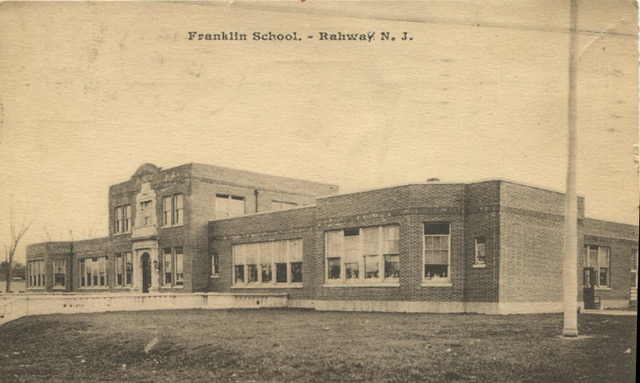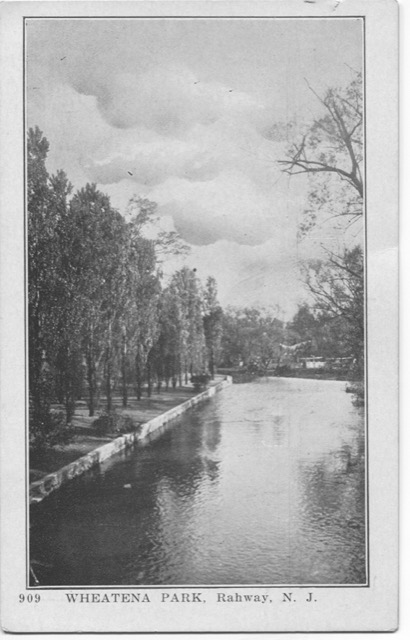
News Briefs from 100, 75, and 50 Years Ago
Submitted by Al Shipley, City Historian and Rahway Library Research Consultant
Another year is upon us. It’s again a good time to get a glimpse of what was going on in our fair city 100, 75, and 50 years ago.
1922
The city was growing in the post- World War 1 period and the Board of Education projected that more schools would be needed due to the rapid growth of population and the expected increase in the number of babies to be born. The new Franklin School on St. Georges Avenue would be ready to open in September, a site for Roosevelt had been selected, and plans for a new school in East Rahway (Cleveland) were on the horizon.
Plans to abolish the volunteer fire department and replace it with a paid department were being discussed by city council. The council was also considering the construction of a garbage incinerator which eventually would be built at the end of Haydock Street.

Members of the Rahway Federation of Churches were protesting a bill before the New Jersey State Legislature that would allow movies to be shown on Sundays. The Federation also admonished the Board of Education for allowing tennis to be played on Sundays on the courts at Riverside Park (Veterans Field) which was owned by the Board.
In July, Arthur R. Wendell, President of the Wheatena Corporation, donated the first tract of land to the Union County Park System. The donation included four acres of the company’s holdings along the Rahway River at Elizabeth and Grand Avenues.
New clubs were being organized in the twenties. On September 24, the Italian American Club was formed when three societies joined to create the Gugliemo Marconi Lodge. 120 candidates were initiated into the new lodge. Local businessmen met at the Cross Keys Hotel in October and started the Rahway Chapter of Kiwanis.
1947
Permanent and temporary housing for veterans was being constructed to provide housing needs for those returning after their service during World War II. When the first 35 units became available, 307 applications were filed. Temporary housing complexes were constructed on the block of Bond, Washington, and Brady Court, Dietz Court, Turner Street, Barry Court, and Lennington Street.
Parking meters were installed throughout the business section much to the chagrin of both shoppers and shop keepers who argued for parking lots, not meters. Small lots would be created, but the meters remained.
In August, prior to the high school football season, a committee was formed to study plans for a new athletic field to replace the field at Riverside. The committee considered two options. One proposal was to purchase Riverside from the Board of Education and make major upgrades to the facility. A second possibility was to construct a new field in another part of town. In the end, the committee was not able to achieve any of its goals and football remained at the Central Avenue field.
1972
The problem of flooding has always been an issue in Rahway and in 1972 City Council and members of the Rahway Citizens for Flood Control joined to seek remedies. At a meeting in July, Rahway’s Municipal Council adopted an ordinance regulating the use of floodways and flood hazard areas and placing restrictions on construction in flood plains. Rahway was one of the first municipalities in the nation to adopt such an ordinance.
Residents living in the western part of the city and city officials protested when the Union County Board of Freeholders asked the State Department of Transportation to consider the construction of a new Garden State Parkway interchange at Inman Avenue in Woodbridge. The county board felt a new exit would relieve traffic congestion at the Clark exit. An Inman Avenue exit would also facilitate movement of traffic from the parkway into Rahway, Edison, Plainfield, and northern sections of Woodbridge. Fortunately for Rahway, city officials prevailed and the proposed exit was never installed.
Rahway City Hall and Police Headquarters were antiquated and in need of renovation. In July, an appropriation of $500,000 was introduced to city council that would convert the former Elizabethtown Gas Building at Central Avenue and Hamilton Street into Police Headquarters. Some of the appropriation would also be used to renovate the city hall building. The proposed plans were voted down when the six votes required to adopt the ordinance could not be garnered. Over the next ten years, other plans would be brought before the council, but it would not be until June, 1981 when a new City Hall/Police Headquarters complex was dedicated.
